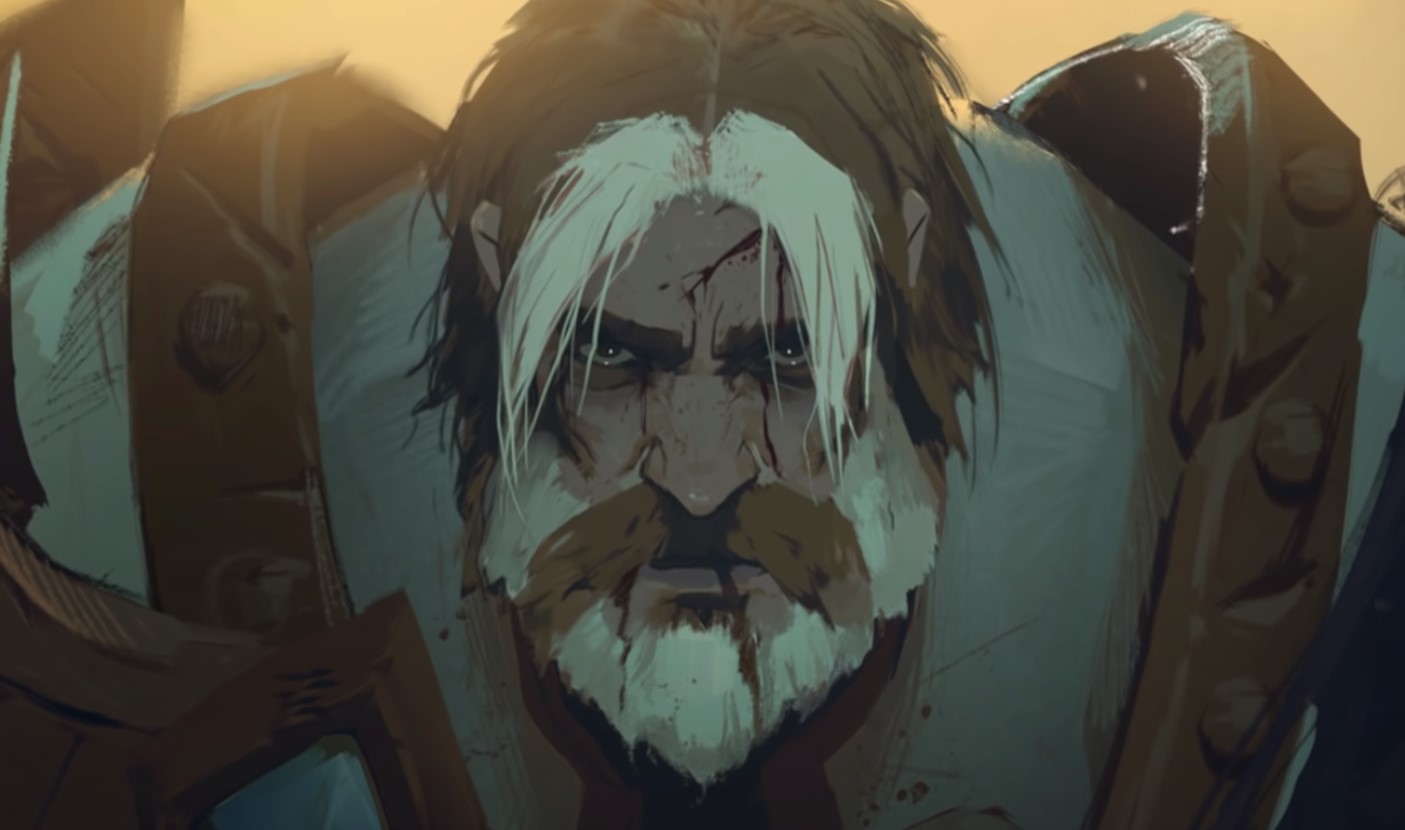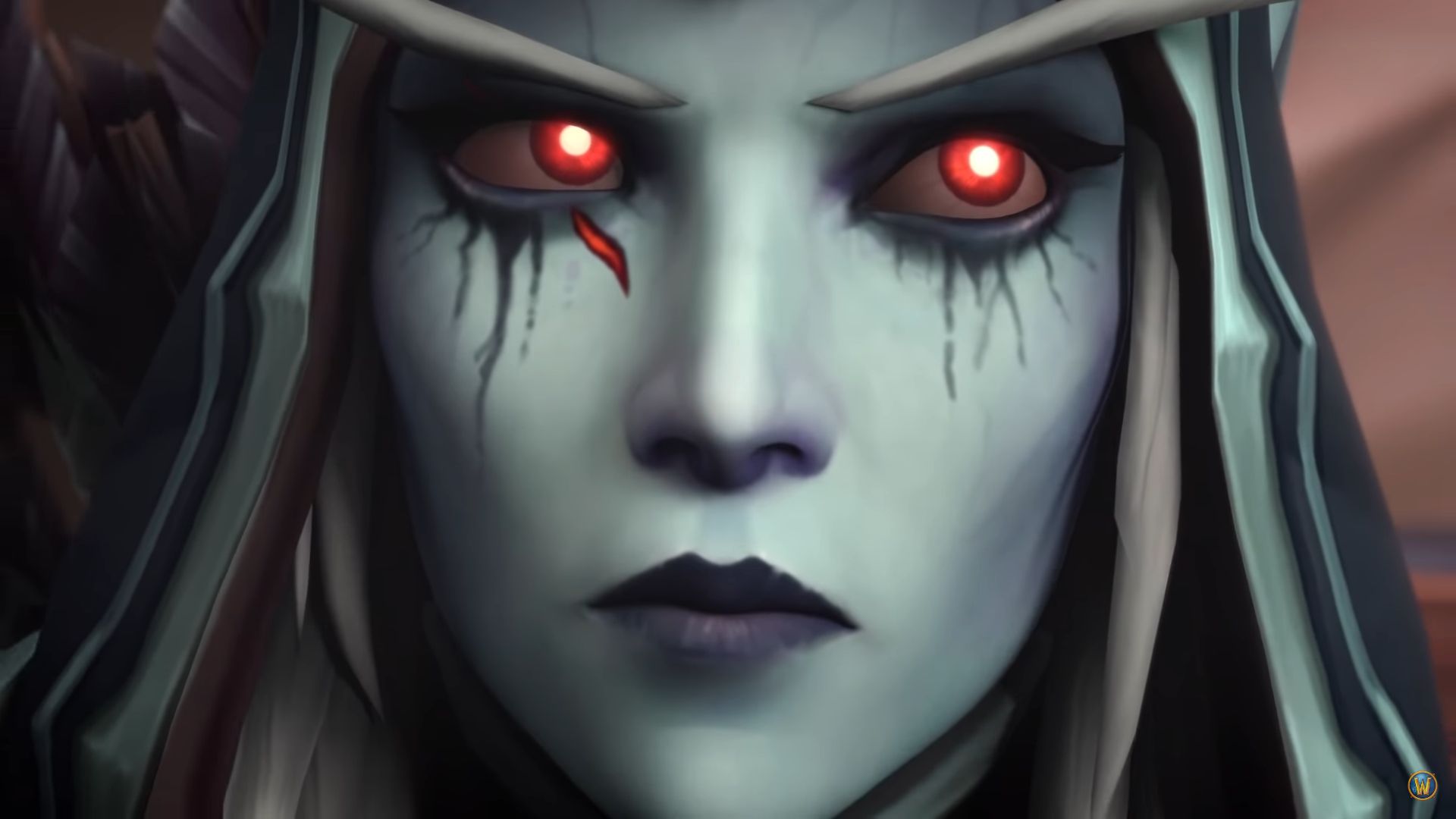Shadowlands' first year was so disappointing I've given up on WoW
Big delays, underwhelming updates, and inconsistent direction have squandered whatever potential Shadowlands once had.

When Shadowlands first launched a year ago, it felt like World of Warcraft was on a comeback streak. Battle for Azeroth, the previous expansion, had been one of the most contentious in the MMO's history—even if Blizzard did improve some of the features that players hated. But Shadowlands was a clean slate. A chance to press reset and push WoW into a new era, all while tearing the veil off of one of Azeroth's most fascinating realms: the afterlife. There were new zones to explore, new gear to obtain, and a whole smattering of new progression systems to learn and tinker with. It was an exciting time.
Fast forward one year, though, and I couldn't feel more differently about World of Warcraft.
With painfully large gaps between its underwhelming updates, Activision Blizzard's many discrimination and sexual harassment lawsuits and investigations, and a creative vision that feels completely divorced from what players actually want, I have never felt so disenfranchised with World of Warcraft and so uncertain of its future. In fact, I've stopped playing altogether and have no plans on coming back. But to understand why, we have to look back over the good, the bad, and the ugly World of Warcraft: Shadowlands' first year.
Launch day
Playing World of Warcraft these past few years has felt like being trapped in a perpetual beta test.
World of Warcraft: Shadowlands held a lot of promise at launch. It was big and beautiful, and the five new zones—each themed after a different fantasy afterlife—were gorgeous and full of fun surprises. In my review, I said Shadowlands "is the best World of Warcraft has been in a long while." If only I had known.
What I liked about Shadowlands at the time was how ambitious Blizzard had been with trying new things. Torghast, for example, was a randomly-generated roguelike dungeon where you accrued funny and wild temporary powers over the course of your run. Like any good roguelike, sometimes I'd get a hodge-podge of random abilities, and other times I'd luck into a synergy that was so powerful I'd cut through Torghast's enemies like room temperature butter.

Shadowlands had also made some smart adjustments based on the negative reception to Battle for Azeroth. Randomness played a much smaller role in acquiring new gear, and a new Legendary equipment system let you track down specific recipes and craft powerful Legendary items instead of just praying to RNGesus the right one would randomly drop.
But, just like Battle for Azeroth, Shadowlands divided the community over a handful of features that players hated. The biggest was Covenants, a kind of gang you'd join once hitting max level and beating the story. Each Covenant had their own base that could be leveled up, along with special story quests, unique abilities, and glorious cosmetic armor pieces. It was meant to be a choice as important as choosing what class you wanted to play as, but not everyone was convinced it would work.
Keep up to date with the most important stories and the best deals, as picked by the PC Gamer team.
Starting from as early as Shadowland's alpha tests, players pointed out how imbalanced Covenant special abilities would likely force players to pick one solely based on whatever gave them a slightly better edge, rather than which one they thought was cooler. Along with a secondary talent tree system called Soulbinds that was similarly restrictive, many players were concerned that Shadowlands' endgame would feel limiting and frustrating. And time ultimately proved them right.
The long drought
Normally, an expansion's first major update hits a few months after launch—once players have a chance to level up and are beginning to tire of the repetitive endgame grind. But whether due to the pandemic or something else, Shadowlands' 9.1 update ended up shipping much later. It took 218 days before the release of the first major patch, the longest gap between an expansion release and its first major update in WoW's 17-year-history. It sucked.
This drought sapped all momentum Shadowlands had going for it and exacerbated player's complaints. Covenants, for example, began to feel much more arbitrary and restrictive than consequential. Choosing one was meant to be permanent (switching came with big setbacks), but it ended up feeling like Shadowlands was an expansion you paid full price for and only received a quarter of. If you wanted to experience other Covenant storylines or earn their gear, you had to start a new character and grind for it.

Even Torghast began to irk me. There just wasn't enough diversity compared to proper roguelikes to sustain how often I needed to complete it for resources to power up my Legendary items. But because of the way rewards were distributed, it was possible to spend upwards of 40 minutes on a run only to die and get nothing. I've never had a more frustrating experience in World of Warcraft in the years I've been playing it.
The bulk of Update 9.1 was a disappointingly tiny new zone to explore called Korthia and some more repetitive weekly activities where you'd fight alongside the different Covenants. One big ray of hope was that 9.1 would push the story forward and finally let players duke it out with long-time villain Sylvanas in the new raid. But the cutscene that we had waited so long to see—one that I hoped would finally make the story interesting—was so unbelievably terrible the WoW subreddit instantly filled with mock and scorn. There was no closure and no emotional payoff, just another contrived plot twist and some new macguffins to chase.
Since beta, players have complained about these exact issues and Blizzard didn't listen.
That's where World of Warcraft has been for the past five months. In that time, Activision Blizzard's culture of sexual harassment and discrimination was also exposed through lawsuits and investigative reports. Players responded by cancelling their subscriptions en masse and staging protests in-game with their remaining game time, while employees staged their own walkouts to demand more accountability.
Around that time, Blizzard began making small updates to World of Warcraft, to remove dialogue, characters, and references—most of them decades old—that it considered offensive. It was something that should've happened long ago, but Blizzard's decision to only act on it now irritated many players who were desperate for bigger changes to problems they felt were more relevant, like Shadowlands' stagnant endgame.
Those changes did come, though. Earlier this month, Blizzard released a surprise patch 9.1.5 that included a ton of the most-requested quality-of-life features. Players can finally switch between Covenants freely and level them up individually on one character, for example, and there's a host of new catch up systems that make it easier than ever to get started on the endgame grind.
But those changes are far too little too late. Since beta, players have complained about these exact issues and Blizzard didn't listen. Even during those 218 days, WoW game director Ion Hazzikostas asserted that Blizzard was not going to lift the restrictions on Covenants (even after hinting that it might). Then, all of a sudden the development team pulls a 180 and does exactly what it said it wouldn't. So, what changed?
The answer isn't clear, but you can guess that the large exodus of WoW streamers going to play Final Fantasy 14 instead—followed by a huge swathe of players—definitely had something to do with it. During the summer months, some of WoW's biggest YouTubers and streamers outright quit the game, including Preach and MadSeason, two of WoW's oldest and most recognizable faces.
But even if Blizzard eventually caved, there's no cause for celebration. While many of these issues facing the game feel relatively small on their own, together they make World of Warcraft feel like it's in the midst of its worst identity crisis ever. As someone that's been writing about it for over five years, I've lost any hope in its future. I've unsubscribed and have no intention of playing it again.
Giving up
There's just no real indication Blizzard is any closer to having a consistent vision for World of Warcraft.
Shadowlands has highlighted just how unsustainable World of Warcraft has become. It's locked in an infuriating cycle of Blizzard swinging big on ambitious expansions and then doing very little to address player feedback until far too late. Just like Battle for Azeroth, Shadowlands had promise but launched with some clear issues that were left to fester unacknowledged for months until the community became so irate that Blizzard had to respond. But now that some of these meaningful changes are actually implemented, we're already nearing the end of the expansion, and the cycle repeats. Playing World of Warcraft these past few years has felt like being trapped in a perpetual beta test, which only makes its premium-priced expansions, subscription fee, and account services even more insulting.
MMOs are games in motion. They need momentum, but World of Warcraft feels like it's stuck in a hamster wheel: a cycle of promise, repentance, and action that never actually improves the game in any tangible way because each new expansion wipes the slate clean just as the last one was starting to improve. It makes it impossible to be anything but cynical about new announcements and next year's new expansion because there's just no real indication Blizzard is any closer to having a consistent vision for World of Warcraft.
World of Warcraft: Shadowlands was supposed to be a comeback story after Battle for Azeroth's many controversies, but instead it just remixed them in new and frustrating ways. It's carried almost entirely on the strength of its world and raid design, while everything else—story, activities, progression—have slowly turned into a mess of conflicting ideas and promises that next time things will be better. But after Shadowlands, I'm done caring.
With over 7 years of experience with in-depth feature reporting, Steven's mission is to chronicle the fascinating ways that games intersect our lives. Whether it's colossal in-game wars in an MMO, or long-haul truckers who turn to games to protect them from the loneliness of the open road, Steven tries to unearth PC gaming's greatest untold stories. His love of PC gaming started extremely early. Without money to spend, he spent an entire day watching the progress bar on a 25mb download of the Heroes of Might and Magic 2 demo that he then played for at least a hundred hours. It was a good demo.


